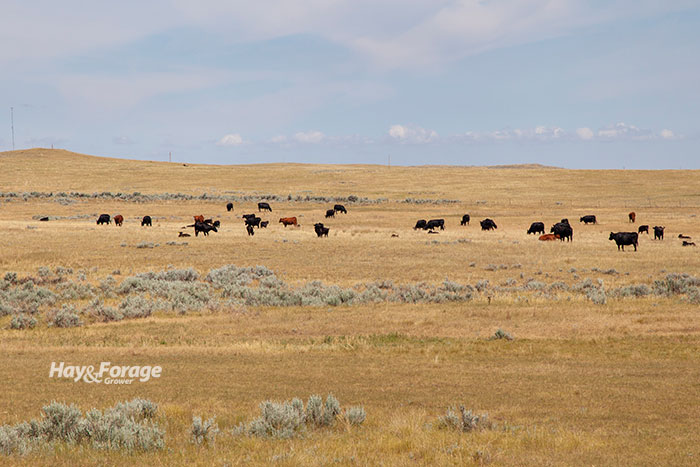
In most states, dry summer weather no longer comes as a surprise — it is to be expected. Therefore, establishing a drought management plan is essential to maintaining forage and livestock production from one year to the next.
Paul Beck with Oklahoma State University Extension says it is critical to be proactive before temperatures rise and rainfall becomes limited. The beef nutrition specialist suggests mapping out drought management into three categories: before, during, and after.
“Failure to take preventative action and plan ahead at early signs of drought results in overgrazing damage to pastures, excessive feeding, and herd liquidation,” Beck states. “Although drought cannot be avoided entirely, a good forage management plan will lessen the impact on forages and hasten pasture recovery when growing conditions return.”
Plan ahead
Focus on managing pastures to extend the grazing season. Beck notes grazing forage is more cost-effective than making hay, and longer grazing seasons positively affect farm profitability. Moreover, he explains how a seasonal approach to grazing can offer greater management flexibility.
“Spring, summer, and fall seasons are managed as 100 days each, leaving a 65-day winter season,” Beck says. “Forage management plans should be made at least one season in advance to ensure timeliness of implementation and to allow options in case of unexpected growing conditions, such as drought.”
In addition to the pasture base, Beck recommends seeding other species to enhance seasonal forage systems. Incorporate crops that are suited for the growing environment and will serve a purpose to plant production during a specific time of year.
Graze strategically
Prioritize forage utilization and regrowth. Culling underperforming animals from a herd is one way to reduce immediate forage needs; however, improved grazing management may be more effective.
Avoid overgrazing, as this can compromise root systems, reduce plant energy stores, and cause soil temperatures to rise. Consider rotationally grazing livestock to prevent overgrazing from inhibiting future forage growth.
“Rotational grazing helps maintain forage growth longer into a drought period than continuous grazing,” Beck asserts. “Rotating pastures during drought conditions can help protect standing forage for later grazing and will improve recovery due to more rest time for each paddock.”
Limit grazing and feeding hay is another strategy to minimize overgrazing. Move animals to a sacrifice paddock and feed hay until better growing conditions arrive. “This practice limits overgrazing damage to one pasture and helps protect forage in other pasture that will be needed for later grazing,” Beck says.
Boost recovery
When a drought finally passes, assess pastures for damage. Some areas may be able to recover on their own, while others will need to be overseeded or completely renovated. Beck recommends thickening thin stands by seeding more of the same species, then adding legumes, winter annuals, or forage brassicas if necessary.
Don’t graze livestock directly after it rains — give pastures time to facilitate regrowth. Weeds, on the other hand, must be eliminated from a stand to give pastures the best opportunity to recover.
“Weeds can take over a weakened pasture quickly when rainfall occurs, preventing forage regrowth and sharply reducing volunteer reseeding of desirable forages,” Beck cautions. He suggests using concentrated grazing pressure, mowing, or herbicide as appropriate to control specific weed species.

Amber Friedrichsen is the 2022 Hay & Forage Grower editorial intern. She currently attends Iowa State University where she is majoring in agriculture and life sciences education-communications and agronomy. Friedrichsen grew up on her family’s diversified crop and livestock farm near Clinton, Iowa.

